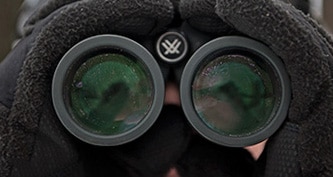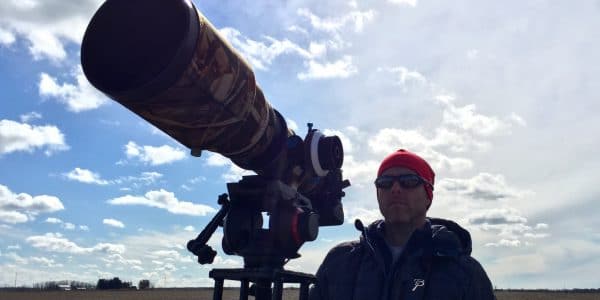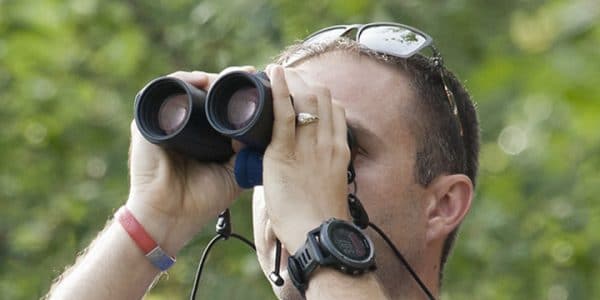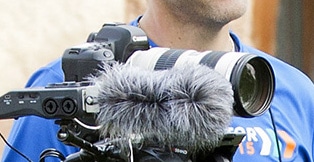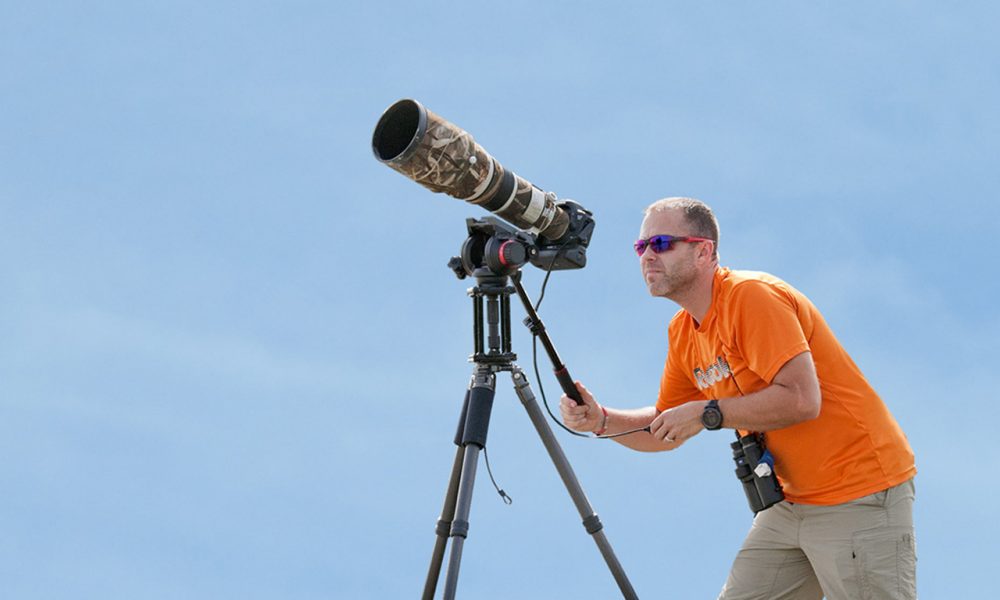
The Gear You Will See Me Using
Binoculars and Scope
Zeiss 10×42 Victory HT Binoculars- I birded with a $170 pair of bins for my first 10 years which served me well. However, once investing in the quality of optic I bird with now, it was like entering a whole new world of brightness and clarity.
Bushnell Elite Scope w/30x fixed eyepiece- This is a lower end scope I’ve used for years. I made the conscious choice to not go big with a scope knowing I wouldn’t use it as often. Note: this scope is no longer made.
Camera Body, Lenses & Post-processing Tools
Camera Bodies: Canon R5 mirrorless camera bodies (the switch to mirrorless has been superb for most reasons, especially ability to hold focus on flighted birds, the only thing that will inevitably need to catch up is better battery life)
Bird Lenses- Canon EF 500mm f4 L IS USM telephoto lens, Canon RF 100-500mm f4.5-f7.1 L IS USM, Canon RF 70-200mm f2.8 L IS USM mid-range telephoto lens and Canon RF 24-105mm f4 L IS USM- The 500mm was historically my main bird lens for over a decade but the in-field useability of the lightweight 100-500mm is quickly replacing my 500mm as my favorite lens even with the loss of light/speed.
Processing Software Tools- Within the Adobe suite of tools, I use Adobe Photoshop exclusively for editing and processing my images. While many photographers love Adobe Lightroom and for many, this is good enough; the tools available in Photoshop are absolutely vital to proper image post processing, especially the use of layers.
Field Guides and Apps
Bird and Hawk Field Guides: The Sibley Field Guide to Birds by David Sibley, Hawks in Flight by Sibley/Dunne/Sutton.
Apps: Raptor ID app (Hawkwatch International & Ligouri), The Sibley Field Guide to Birds, Audubon Field Guide to Birds, iBird Pro, Warbler Guide and Peterson Birds of NA
-I recommend all of the above apps because all have features I love but there isn’t just one that has everything.
Where I Buy My Gear
Camera Equipment- Norman Camera and B&H Photo
-Norman Camera is an outstanding local business with amazing staff, however, there are times when B&H either carries products Norman’s does not or has stock available where others do not
Binoculars/Scopes- Eagle Optics was long my go-to source for anything binocular and scope related, however they closed their doors to focus more on their Vortex optics brand. This is a great source for a wide range of optics and outside large outdoor stores like Cabela’s or Bass Pro Shops, there are no local optics shops I can recommend.
Binoculars
I recommend 8×42 binoculars to all new birders for general birding. Any more magnification than 8x is harder to handle, especially if you are already unsteady. For hawk watching, 8x42s will still work great. Some, including myself, so still prefer 10x power and have spent the time to get used to the higher magnification for the extra reach. At sites like the Detroit River Hawk Watch where hawks are seen at very long distances, the extra magnification is helpful. I also recommend the newer roof prism style binoculars as they are more comfortable to hold, are usually waterproof and are more rugged. While the quality of optics goes up significantly as you invest more money, even binoculars in the $200 range are outstanding. I would shy away from the low-dollar optics found at department stores.
Scopes
A scope and steady tripod is a must if you plan to do a lot of hawk watching. I recommend a scope with a fixed eyepiece of 25-30x power and the widest field of view you can afford. I also recommend a panning type head that allows for smooth left and right movement and tripod legs that can support 2-3 times the weight of your scope, at a minimum. If you plan to only visit hawk watches occasionally, investing in a scope is not necessary. Most birders and hawk watchers are more than willing to allow anyone to use their scopes.
Where to Purchase
I recommend Eagle Optics as an outstanding resource for all optics. It’s best to share your budget, type of birding you prefer and any eye or medical issues that could affect your birding. You can trust their recommendations. They have never steered us wrong, their shipping times are insanely fast and I’ve never had a single person come back to me with a less than satisfying experience. Places like Cabela’s and Bass Pro Shop’s carry optics but they are typically NOT birders selling the equipment. The staff at Eagle Optics are birders who know exactly what you need. While this sounds like a sales pitch, I am getting absolutely nothing for this recommendation. They are just truly a great company to deal with.
For camera bodies, lenses and support I prefer Norman Camera all day long. They have locations in both Kalamazoo, MI as well as Grand Rapids, MI plus their on-line catalog is immense with pricing comparable to even B&H Photo. I deal exclusively with Matt, however all their staff is great.
Camera Bodies
I always recommend to new photographers that your money is best spent in glass (i.e. good lenses). The lenses hold their value and you will own them for years and years where camera bodies come and go. When looking at a digital camera body, get the fastest speed you can. Meaning a fast burst rate (anywhere from 6 to 12 frames per second) and fast autofocus system. When you watch hawks gliding by, they seem like they would be easy to follow and photograph. Do NOT let them deceive you. They are like rockets and seem like they want nothing more than to avoid your camera. Most importantly, get a camera body that is easy to use and one that makes for quick setting changes using buttons instead of menus on the screen. Important setting changes include exposure compensation, AF drive settings, ISO, etc.
Camera Lenses
The general rule of thumb for lenses and birds is a minimum length of 300mm. I started out with 300mm and a matched 1.4x tele-converter which worked really well. Beware of tele-converters as they slow your autofocus down due to the reduction in light and your shutter speed will slow down as well. Buy local and test them out before committing. If you can afford it, prime lenses are the sharpest on the market. I shoot with a 500mm prime and rarely ever use a tele-convertor because I want the quality to be as high as possible. If big glass is out of your reach, it might be worth using a tele-converter, even knowing you will lose a bit of quality. Also get the fastest lens you can afford. It doesn’t cost much to get a 300mm f5.6 lens. Jump to f4 or even f2.8 and be prepared to spend a pretty penny. In the end, work with a local camera shop and get what’s best within your budget.
Tripods and Support
If you are able to hand hold your camera and lens, I recommend starting there. Work at holding it steady and panning left and right smoothly. For heavier rigs, a tripod is a must. Always buy legs and heads that can support 2-3 times the weight of your rig (minimum). For birds in flight a high quality, smooth gimbal setup is ideal. Brands such as Wimberley and Really Right Stuff are outstanding, however they come with a high cost. The investment is well worth it, as the gear will last forever. Also look into Gitzo tripod legs. Again, a hefty investment up-front but you will have them for years and years.

